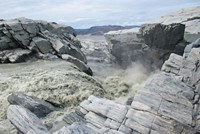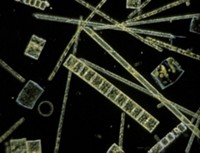Advertisement
Grab your lab coat. Let's get started
Welcome!
Welcome!
Create an account below to get 6 C&EN articles per month, receive newsletters and more - all free.
It seems this is your first time logging in online. Please enter the following information to continue.
As an ACS member you automatically get access to this site. All we need is few more details to create your reading experience.
Not you? Sign in with a different account.
Not you? Sign in with a different account.
ERROR 1
ERROR 1
ERROR 2
ERROR 2
ERROR 2
ERROR 2
ERROR 2
Password and Confirm password must match.
If you have an ACS member number, please enter it here so we can link this account to your membership. (optional)
ERROR 2
ACS values your privacy. By submitting your information, you are gaining access to C&EN and subscribing to our weekly newsletter. We use the information you provide to make your reading experience better, and we will never sell your data to third party members.
Environment
Deep-Sea Vents Dispense Nutritious Pyrite Nanoparticles
Iron from pyrite (FeS2) particles delivered over long distances helps feed oceanic bacteria and plankton
by Sarah Everts
May 16, 2011
| A version of this story appeared in
Volume 89, Issue 20
Bacteria and plankton hungry for iron in the deep ocean can’t just pop over to the nearest pharmacy to buy a multivitamin or dig into a juicy steak. Instead, new research shows that they may be getting their daily allowance of iron from pyrite (FeS2) nanoparticles delivered over long distances after erupting from hydrothermal vents (Nat. Geosci., DOI: 10.1038/ngeo1148). In the past, researchers believed that a majority of the iron bursting out of these deep-sea vents would immediately precipitate nearby as the hot vent fluid mixed with cold seawater. Biogeochemists subsequently discovered that some hydrothermal vent iron remained dissolved and was transported farther from the vents than expected. A team led by George W. Luther III and Mustafa Yücel of the University of Delaware now report that hydrothermal vents are “nanofactories” that produce stable pyrite nanoparticles up to 200 nm wide. Formed before erupting from vents, the nanoparticles remain suspended and slowly oxidize to release iron for deep-sea creatures farther afield. This incarnation of pyrite—also known as fool’s gold for its deceptively shiny yellow appearance—appears to be priceless to the ocean food chain, the researchers say.





Join the conversation
Contact the reporter
Submit a Letter to the Editor for publication
Engage with us on Twitter